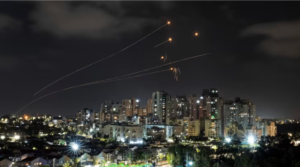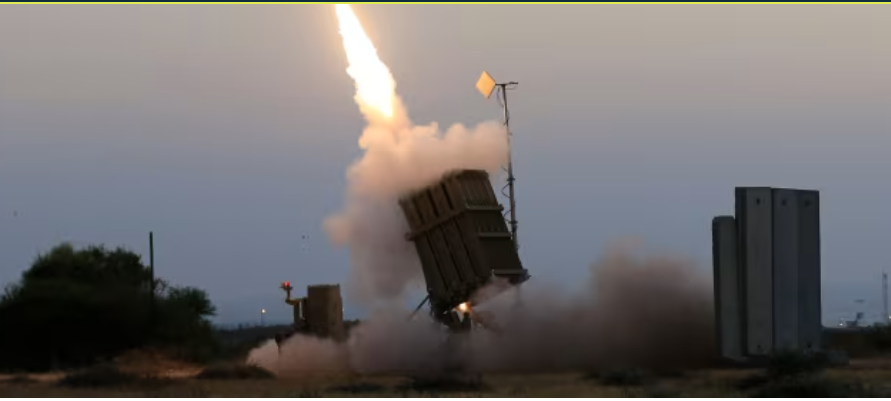Image caption: Israel’s Iron Dome in action as it intercepts rockets fired by the Hamas militant group
Israel’s Iron Dome: The air defence system saving civilians’ lives from Hama’s rockets – How it works
After an attack by Hamas, an Islamist militant group, inside Israel on Saturday, October 7, the conflict with Palestine and Israel has taken over 12,000 lives and plunged two million people in Gaza into a humanitarian crisis.
Hamas is believed to have massacred babies, women, the elderly, and captured over 200 hostages while firing at Israel. In retaliation, the Israeli defence minister has said: “Gaza will never return to what it was.”
Advertisement
An estimated Thousands of rockets have been fired towards southern and central Israel by Hamas militants, according to the Israel Defence Forces (IDF). The Israeli military are returning the rocket fire.
Israeli citizens have been relying on the Iron Dome missile defence system to protect them as rockets rain down. Luckily for them, the US has already replenished munitions.
What is the Iron Dome and how is it protecting Israel’s citizens?
WHAT IS ISRAEL’S IRON DOME AND HOW DOES IT WORK?
Iron Dome is designed to shoot down incoming projectiles and is one of the most important tools in Israel’s arsenal.
It is highly effective, and is said to have saved countless civilian lives over several conflicts in the last decade. The Israel Defence Forces (IDF) said the system boasted a 95.6% success rate during a rocket salvo fired by Islamist Jihad in May.
The home-grown system is meant to shoot down rockets and artillery shells with ranges of up to 45 miles.
Advertisement

It allows the army to predict the flight path of incoming rockets and uses a command-and-control system to quickly calculate whether a projectile poses a threat or is likely to hit an unpopulated area.
If the rocket does pose a threat, it relays coordinates to missile units and the Iron Dome fires missiles from the ground to destroy in the air.

To those on the ground, a direct interception sounds like a loud bang and can sometimes be felt.
Unlike the air defence systems designed to stop ballistic missiles, Iron Dome targets unguided rockets that remain at low altitudes – the type often fired by militant groups in Gaza.
WHEN WAS THE SYSTEM INTRODUCED?
Iron Dome was commissioned soon after Israel’s 2006 conflict with Hezbollah when dozens of Israelis were killed as rockets showered the country from neighbouring Lebanon.
Development began in 2007, and after tests in 2008 and 2009, the first Iron Dome batteries were deployed in 2011.
The system has been upgraded several times since.

WHERE IS IT BASED?
There are 10 Iron Dome batteries across Israel – including in Tel Aviv – each of which has three to four launchers, according to Raytheon and the Center for Strategic and International Studies.
The system is highly transportable and requires just a few hours to set up, and the missile interceptors themselves are easy to move.
They are three metres long and weigh around 198 pounds at launch, the security analysis group IHS Jane’s said in 2012.

The warhead’s range is from 4km to 70km (2.5 miles to 43 miles).
IS IT EXPENSIVE?
Very. During times of conflict, the cost to operate Iron Dome can rise quickly.
Each missile costs around $40,000 (£32,600) so intercepting thousands of incoming rockets adds up.
The US government has spent over $1.5 billion (£1.2b) on the Iron Dome programme, and research related to it as well.
A US official told CNN at the beginning of the latest conflict that Israel will likely request additional interceptors in addition to other military assistance from Washington.


